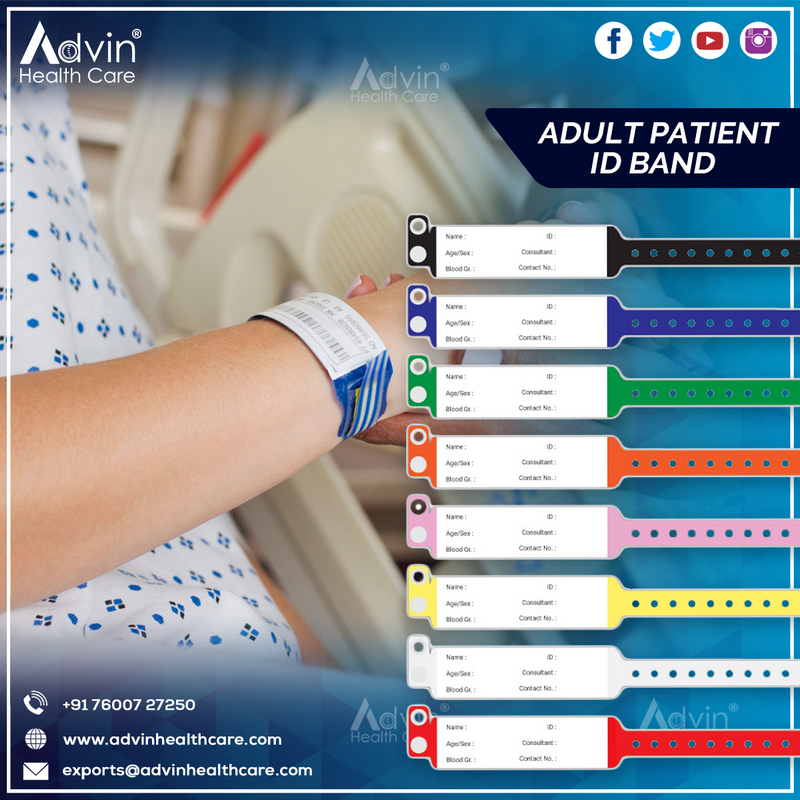Discovering the Numerous Kinds Of Patient Identification Band Used in Medical Facilities
In the detailed world of healthcare, the vital duty of Patient Identification bands usually goes unnoticed. These bands, varying from simple paper wristbands to advanced RFID bands, form the backbone of Patient safety and security procedures, making sure precision in Patient Identification. The vast diversity of these bands, each with its unique advantages and restrictions, is typically neglected. As we browse with this topic, one might acquire insight right into the subtle complexities and critical relevance of such bands in clinical facilities.
Understanding the Relevance of Patient Identification Bands
While they might feel like simple devices, Patient Identification bands play an important duty in medical facilities. These bands serve as a critical tool for validating Patient identity, avoiding clinical mistakes related to misidentification. The bands usually present essential info such as the Patient's name, age, blood kind, and any kind of known allergies. They allow health care experts to promptly access this critical info, consequently promoting precise and timely medical therapy. Patient Identification bands additionally aid in enhancing management jobs, making certain exact record-keeping and payment. Despite their simplicity, these bands embody the principle of Patient safety and security, a keystone of top quality healthcare. Without them, the risk of medical errors, and consequently, Patient injury, could dramatically raise.
Conventional Paper Wristbands: Their Usage and Limitations
Conventional paper wristbands have actually been a staple in Patient Identification throughout numerous clinical centers. While their use is prevalent, they nurture particular constraints that may impact their efficiency in Patient administration. This area will certainly focus on the range of their application and the inherent disadvantages connected with their usage.
Paper Wristbands: Usage Scope
In the realm of Patient Identification, paper wristbands have long held a vital function. These bands are typically made use of in outpatient settings, where the Patient's stay is short-lived. The wristbands include essential info such as the Patient's name, date of birth, and an unique Identification number. This simple, yet efficient system, allows clinical professionals to promptly and precisely recognize clients, making certain the right treatment is carried out. Paper wristbands are likewise made use of in emergency scenarios, where rapid Identification is critical. Their usage includes occasions like blood contribution drives and mass inoculation programs, further stressing their convenience. In spite of innovations in innovation, the humble paper wristband remains a cost-effective and trustworthy solution for Patient Identification in different healthcare circumstances.
Limitations of Paper Wristbands
Regardless of their extensive use, paper wristbands are not without their disadvantages. In addition, paper wristbands frequently do not have the technological capabilities of even more modern options, such as barcoding or RFID chips, limiting their capability to simply displaying composed information. Paper wristbands can create pain or skin irritation to some people, particularly when put on for extensive periods.
Barcoded Wristbands: Advancements in Patient Identification
While Patient Identification has long been an essential aspect of health care, the advent of barcoded wristbands represents a substantial leap onward. These bands take advantage of the simpleness of barcoding technology, enabling for Patient information to be swiftly checked and accessed. They enhance the speed and accuracy of Patient Identification, lowering the risk of medical errors associated to misidentification.
Superhigh Frequency Identification (RFID) Bands: an Action In The Direction Of Futuristic Health Care
The advancement of Patient Identification bands has brought regarding the development of Superhigh frequency Identification (RFID) Bands (patient identification band). These innovative tools existing vital benefits for healthcare facilities, offering a more efficient and highly advanced ways of Patient Identification. The implementation of RFID in medical care is a substantial action towards an extra advanced method to Patient monitoring and security
Understanding RFID Bands

RFID Bands: Secret Advantages
Welcoming a future where modern technology and health care combine, superhigh frequency Identification bands offer several vital benefits. visit this site Mostly, these bands enhance Patient safety by giving exact, immediate Identification, thereby reducing clinical mistakes. RFID bands can save a substantial quantity of Patient data, consisting of clinical background and allergies, enabling personalized treatment. They likewise improve management tasks, as the automated information access changes hands-on processes, enhancing efficiency and decreasing documents. RFID bands provide real-time tracking of individuals, vital in high-risk settings such as surgical treatment or extensive care. These bands are sturdy and resistant to environmental variables, making sure regular performance. Overall, RFID bands stand for a considerable advancement in Patient Identification innovation, profiting both individuals and healthcare suppliers.
Applying RFID in Healthcare
These bands give a smooth method to track and recognize people, guaranteeing their safety and boosting performance in therapy procedures. RFID bands lower clinical errors by providing exact Patient Identification, which is essential in preventing misdiagnosis or wrong medication administration. Hence, the application of RFID bands is a significant action towards enhancing Patient safety and security and health care delivery.

Color-Coded Wristbands: Aiding in Quick and Accurate Medical Diagnosis
In the busy setting of a medical center, color-coded wristbands have actually emerged as crucial devices for swift and accurate Identification of a person's medical problem. These wristbands, put on by clients, bring details colors that correspond to different clinical problems or statuses. This system is developed to supply immediate visual hints to health care providers, improving Patient safety and security and care quality.
Techniques for Efficient Execution and Administration of Patient ID Bands
Attaining optimum use of Patient Identification bands demands a well-structured approach for their execution and management. Patient education and learning is likewise vital; people have to understand the purpose of the bands and the need for their consistent wear. It's essential to have a backup strategy in location, such as barcode scanning or biometrics, to guarantee that Patient Identification is never endangered.
Final thought
Patient Identification bands are important in medical facilities to make certain safety and accuracy. Efficient execution and management of these bands can substantially lower medical errors, improve performance, and improve general Patient treatment.
These bands, differing from simple paper wristbands to sophisticated RFID bands, develop the Get More Info backbone of Patient security protocols, guaranteeing precision in Patient Identification.The evolution of Patient Identification bands has actually brought concerning the development of Radio Regularity Identification (RFID) Bands. Overall, RFID bands represent a substantial advancement in Patient Identification modern technology, benefiting both individuals and medical care carriers.
RFID bands decrease clinical mistakes by providing exact Patient Identification, which is crucial in preventing misdiagnosis or incorrect medication administration. Patient education is also critical; clients should understand the objective of the bands and the requirement for their consistent wear.
 Jonathan Lipnicki Then & Now!
Jonathan Lipnicki Then & Now! Brandy Then & Now!
Brandy Then & Now! James Van Der Beek Then & Now!
James Van Der Beek Then & Now! Jeri Ryan Then & Now!
Jeri Ryan Then & Now! Nicki Minaj Then & Now!
Nicki Minaj Then & Now!